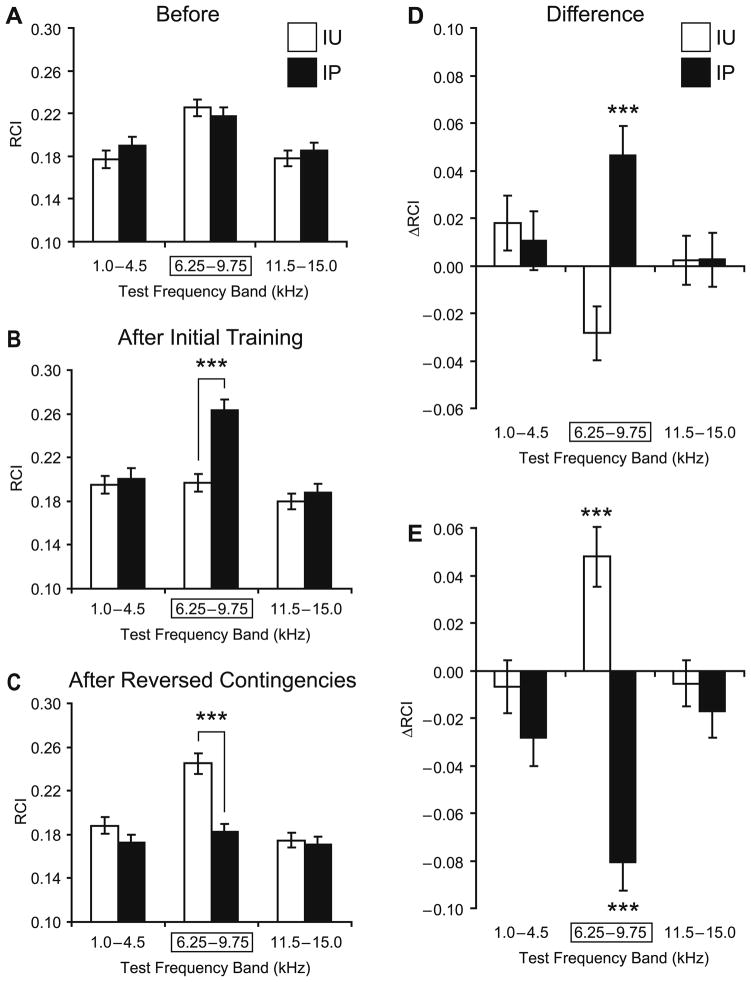Fig. 3.
Effects of sequential training on NB-induced memory. (A) Pre-training (“Before”) frequency generalization gradients to tones in three frequency bands: “Low” (1.0–4.5 kHz), “CS” (6.25–9.75 kHz [framed with rectangle]; the CS was 8.00 kHz), and “High” (11.5–15.0 kHz). There were no significant differences between the IP (black bars) and IU (opened bars) groups before training. Graph bars show mean ± s.e. of Respiration Change Index, RCI (Y-axis). (B) Post-initial-training (“After Initial Training”) generalization gradients for the IP and IU groups. Note the significant difference in response between the groups in the CS frequency band, and no difference in response within both lower and higher sidebands, indicating CS-specific associative behavioral learning. (C) Post-second-training (“After Reversed Contingencies”) generalization gradients for the IP and IU groups. Note the significant difference in response in the CS band between the two experimental groups. There were no significant differences in responses at the Low and High frequency bands. (D) Differential plots reflecting the changes from the baseline (“Before”) to the post-initial-training (“After Initial Training”) responses to tones for the IP (black bars) and IU (opened bars) groups. Post-pairing responses (IP group) were significantly larger within the CS frequency band while showing no significant differences at lower and higher bands with respect to the baseline response levels. In contrast, post-unpaired responses (IU group) were smaller within the CS frequency band while responses within the lower and higher bands did not change much relative to the baseline. (E) Following reversal of contingencies, the group responses showed the reversal as well. Now the responses of the IU animals were stronger within the CS frequency band while remaining unchanged within the lower and higher bands. Conversely, responses of the IP animals declined from the level achieved as a result of initial training. The decline was statistically significant and most pronounced at the CS. There were no significant changes in responses at lower and higher frequency bands. ***p <.005.

